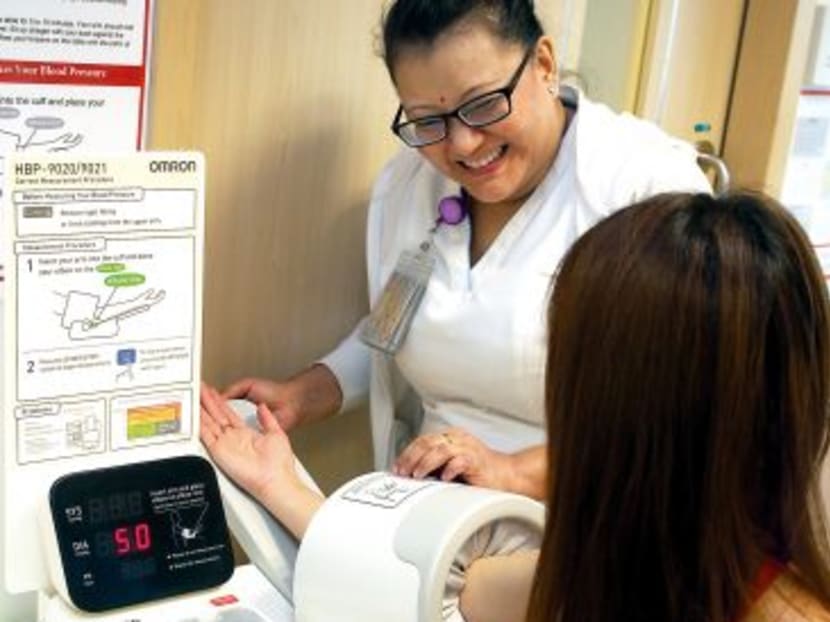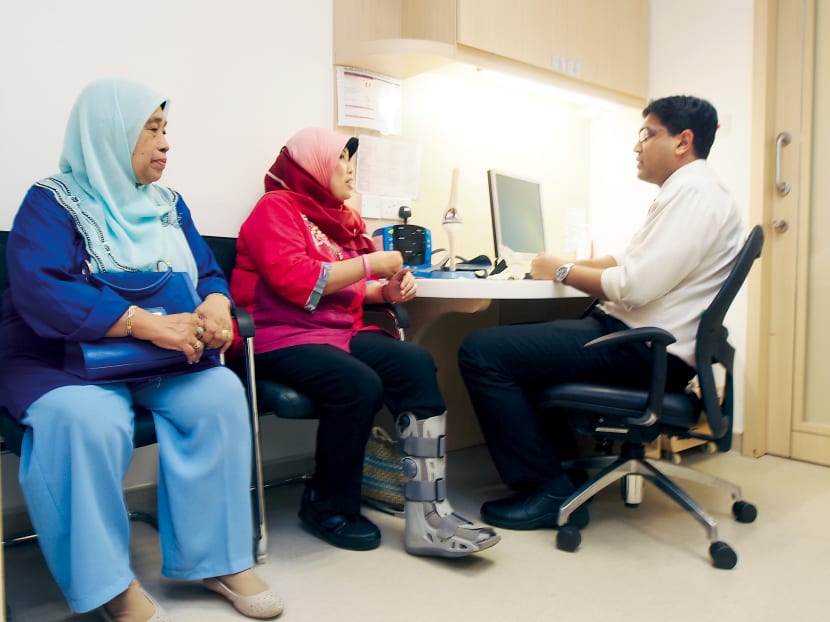Transforming the outpatient journey
SINGAPORE — Madam Rosemawati Abdul Rahman had to take a full day of leave from work to attend her medical appointments at Tan Tock Seng Hospital (TTSH) seven years ago. Now, the 52-year-old librarian is able to wrap up multiple appointments in two to three hours on the same day.


SINGAPORE — Madam Rosemawati Abdul Rahman had to take a full day of leave from work to attend her medical appointments at Tan Tock Seng Hospital (TTSH) seven years ago. Now, the 52-year-old librarian is able to wrap up multiple appointments in two to three hours on the same day.
“For instance, last month, I completed three medical appointments within two-and-a-half hours. I arrived at the first clinic for my mammogram at 9am. By 11.30am, I had also completed a breast ultrasound scan and follow-up at the orthopaedic clinic. I could even go back to work after that,” she shared.
Mdm Rosemawati’s seamless outpatient experience is the result of TTSH’s new Enterprise Appointment Scheduling (EAS) system, a smart appointment feature which coordinates multiple appointments on the same day.
For patients with various medical appointments across different clinics, this system enables them to make only one trip to the hospital.
The EAS system is one of several novel outpatient features that TTSH has introduced over the past few years as part of its Medical Centre (MEC) Masterplan: A hospital-wide project which aims to improve the quality of its outpatient care.
The MEC Masterplan was recently awarded the Excellence Award in the Bio Medical Equipment/ Facilities Improvement category in the Asian Hospital Management Award 2014.
ENHANCING
OUTPATIENT CARE
As demand for healthcare services soars against the backdrop of Singapore’s ageing population, hospitals have enhanced their outpatient processes and facilities.
At TTSH Specialist Outpatient Clinics, attendance increased from 590,000 in 2009 to 660,000 last year.
Dr Jamie Mervyn Lim, deputy chief operating officer of TTSH and chairman of the MEC Masterplan Committee, shared that the majority of elderly patients have chronic conditions which often require multi-disciplinary care.
To improve the quality and flow of its outpatient services, TTSH gradually redesigned its entire patient experience from 2009, revamping its clinic infrastructure and processes.
Dr Lim said: “In the past, our efforts to increase capacity had been ad-hoc in nature, like squeezing a few more rooms within each clinic. Without a holistic approach to capacity expansion, such attempts began to compromise the overall efficiency.”
FREEING UP THE NURSES
One of TTSH’s newest outpatient additions is the self blood pressure management machine. Serving up to 60 patients each day, the machine allows patients to take their own blood pressure by following pictorial instructions.
The idea is to reduce patient waiting time and free up nurses so that they can focus on other aspects of patient care.
TTSH said its new outpatient features and processes have increased care coordination by 3.7 per cent and reduced waiting time to see a doctor by 6.7 per cent.
SHORTER WAITING TIMES
Similarly, a new outpatient system at National Cancer Centre Singapore’s (NCCS) chemotherapy unit has shortened waiting time by 8 per cent for patients receiving chemotherapy. The centre sees more than 35,000 chemotherapy outpatients a year.
Dubbed the Real Time Ambulatory Patient Information Deployment Enabler (RAPIDE) system, it offers staff from the chemotherapy unit quick real-time views of the patients’ locations, drug status and available treatment recliners.
At the unit, patients and nurses are issued tags. Readers installed on the walls and ceiling detect signals from these tags as well as sensor mats on beds and recliners. The information is transmitted to the RAPIDE system, which pinpoints the patients’ and nurses’ locations, chemotherapy recliners and treatment status.
The system also enables staff to allocate unoccupied chemotherapy recliners more efficiently.
Patients also receive an SMS reminder 30 minutes before their scheduled appointment.
This has saved NCCS’ nurses 825 man-hours a year, which were previously spent on manually searching for unoccupied recliners.
The concept was explored in 2009 and implemented in October 2011, said NCCS senior nurse manager Mag Tan.
She shared that 56 per cent of scheduled patients now receive treatment within 30 minutes of registration, compared with 38 per cent before.
“For these cancer patients, every second is precious to them and their loved ones. The higher level of automation has also increased our capacity to treat patients,” said Ms Tan.
MORE CHANGES AHEAD
Ms Chua Gek Phin, director of nursing at NCCS, said that as the landscape of healthcare evolves, more changes in outpatient care can be expected in the years ahead.
“For instance, patients on chemotherapy used to be observed as inpatients, but now, it can be done as an outpatient treatment. As the number of less invasive outpatient procedures and treatment increases, the challenge is to deliver effective care to our outpatients,” she said.
Besides improving outpatient processes within each healthcare institution, Ms Chua added that having a good support system for patients and caregivers is just as important.
“On the ground, we must ensure that we have an effective system in place for our healthcare professionals.”
Ms Chua added: “However, it is also important that we equip patients and caregivers with the right skills and support to help them safely cope with illness and side effects of treatments at home.”





